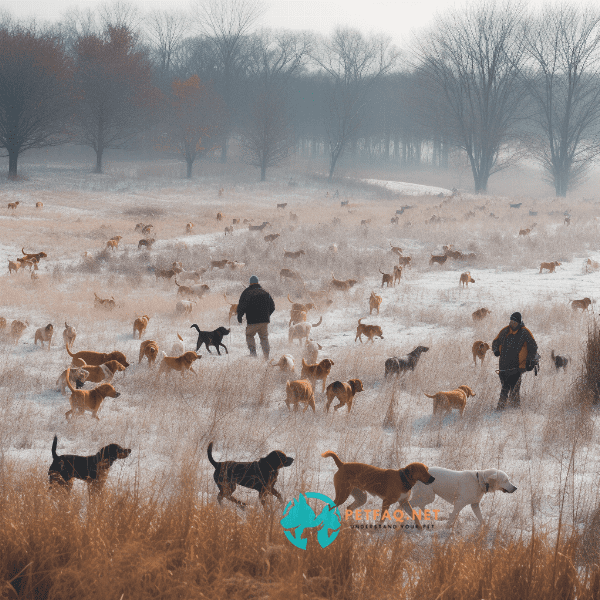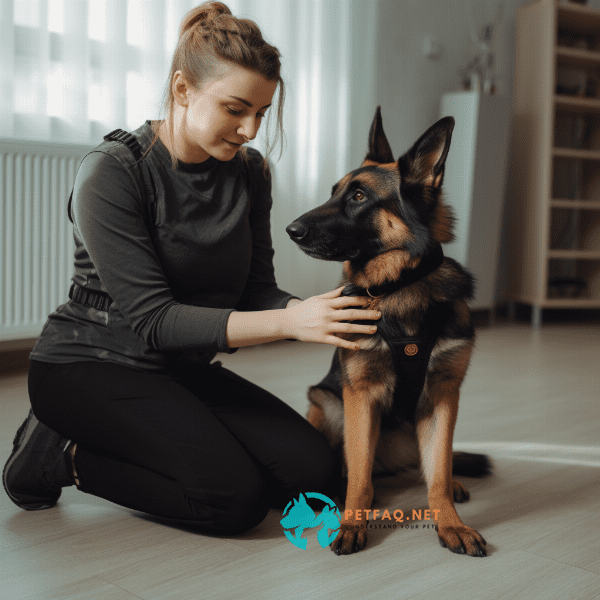Table of Contents
- Understanding the Role of Search and Rescue Dogs
- Selecting the Right Breed for Search and Rescue Work
- Building a Strong Bond with Your Search and Rescue Dog
- Basic Training for Search and Rescue Dogs: Commands and Skills
- Advanced Training Techniques for Search and Rescue Dogs
- Physical and Mental Conditioning for Search and Rescue Dogs
- Maintaining Your Search and Rescue Dog’s Health and Wellness
- Safety Protocols and Emergency Procedures for Search and Rescue Missions
- Working with Other Search and Rescue Professionals
- Continual Learning and Development for Search and Rescue Dog Teams.
Understanding the Role of Search and Rescue Dogs
Search and rescue dogs play an important role in finding and rescuing people who are lost, injured, or trapped in various situations. These highly skilled and trained dogs use their exceptional sense of smell and hearing to locate and alert their handlers to the presence of people in need of help.
The Importance of Search and Rescue Dog Training
Effective Search and rescue dog training is critical to the success of search and rescue missions. It takes a lot of hard work and dedication to train a search and rescue dog to become proficient in their role. This includes training the dog to recognize and respond to various scents and sounds, as well as to follow commands from their handler.
Training begins with basic obedience and socialization, which help to build a strong bond between the dog and their handler. As the dog progresses in their training, they learn more advanced techniques such as tracking, trailing, and scent discrimination. These techniques are essential for search and rescue dogs to be able to effectively locate missing individuals in a variety of environments.
The Different Types of Search and Rescue Dogs
There are several different types of search and rescue dogs, each with their own unique skills and abilities. For example, air-scenting dogs are trained to pick up the scent of any human in the air, while ground-scenting dogs are trained to follow a specific scent on the ground. Other types of search and rescue dogs include cadaver dogs, water rescue dogs, and avalanche rescue dogs.
Each type of search and rescue dog requires specialized training to develop their skills and abilities. This is why it’s important for search and rescue dog handlers to have a deep understanding of their dog’s specific needs and capabilities.
The Benefits of Using Search and Rescue Dogs
Search and rescue dogs offer many benefits over traditional search and rescue techniques. For one, they can cover large areas quickly and efficiently, which can be particularly useful in wilderness and disaster scenarios. Additionally, search and rescue dogs can be trained to find people in a variety of conditions, including under snow, rubble, or water.
Overall, search and rescue Dog training is an essential component of effective search and rescue operations. By understanding the role of search and rescue dogs, handlers can ensure that their dogs are prepared and equipped to respond to any situation they may encounter.

Selecting the Right Breed for Search and Rescue Work
When it comes to search and rescue dog training, selecting the right breed is crucial. Not all dogs are suited for this demanding and highly specialized work. It’s important to choose a breed that has the right combination of physical and mental characteristics to excel in search and rescue operations.
Physical Characteristics to Consider
One of the most important factors to consider when selecting a search and rescue dog breed is their physical characteristics. For example, breeds that are known for their endurance, speed, and agility may be better suited for wilderness search and rescue missions. On the other hand, breeds that are known for their strength and size may be better suited for urban search and rescue operations.
Additionally, it’s important to consider the dog’s size and weight. Smaller dogs may be more agile and able to maneuver in tight spaces, but larger dogs may have more strength and endurance to handle difficult terrain.
Temperament and Personality
Another important factor to consider when selecting a search and rescue dog breed is their temperament and personality. Dogs that are overly aggressive or easily distracted may not be suitable for search and rescue work. Instead, search and rescue dogs should have a strong work ethic, be highly trainable, and have a strong desire to please their handler.
It’s also important to consider the dog’s socialization and interaction with other people and animals. Search and rescue dogs often work in challenging and stressful environments, so it’s crucial that they have a calm and stable temperament.
Specialized Breeds for Search and Rescue Work
There are several breeds that are particularly well-suited for search and rescue work. Some of the most common breeds include German Shepherds, Labrador Retrievers, and Belgian Malinois. These breeds are known for their intelligence, athleticism, and trainability, making them ideal for search and rescue operations.
However, there are also specialized breeds that are specifically bred for search and rescue work. For example, the Bloodhound is known for their exceptional sense of smell and tracking abilities, while the Newfoundland is known for their strength and ability to work in water.
Overall, selecting the right breed for search and rescue work is an important step in the search and rescue dog training process. By considering factors such as physical characteristics, temperament, and breed specialization, handlers can ensure that their dogs are well-suited for this demanding and rewarding work.
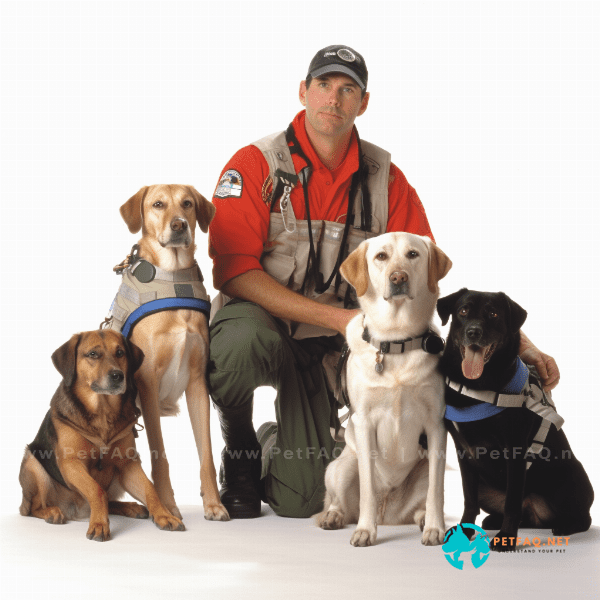
Building a Strong Bond with Your Search and Rescue Dog
Building a strong bond with your search and rescue dog is essential for effective search and rescue dog training. A strong bond between the handler and the dog helps to establish trust and cooperation, which is crucial in high-stress search and rescue scenarios.
Early Socialization and Training
The foundation of a strong bond between a search and rescue dog and their handler begins with early socialization and training. Puppies should be exposed to a variety of people, animals, and environments in a positive and controlled way. This helps to develop their social skills and confidence, which is essential for their success as a search and rescue dog.
Handlers should also begin basic obedience training as early as possible. This helps to establish clear communication between the dog and their handler, and also helps to build the dog’s trust and confidence in their handler.
Positive Reinforcement Training
Positive reinforcement training is an effective method for building a strong bond between a search and rescue dog and their handler. This method involves rewarding desired behaviors and ignoring or redirecting undesired behaviors.
Handlers should use treats, praise, and play to reward their dog for good behavior during search and rescue dog training. This helps to build the dog’s confidence and trust in their handler, and also reinforces positive behaviors.
Spending Time Together
Spending time together outside of search and rescue dog training is also important for building a strong bond between the handler and the dog. This includes playing, going on walks, and engaging in other activities that the dog enjoys. This helps to build a positive association between the dog and their handler, which can improve their performance during search and rescue missions.
Understanding Your Dog’s Needs
Finally, understanding your search and rescue dog’s needs is crucial for building a strong bond with them. This includes understanding their physical and mental needs, as well as their likes and dislikes.
Handlers should pay attention to their dog’s body language and behavior, and adjust their training methods and activities accordingly. This helps to build a deeper understanding and connection between the handler and the dog.
Overall, building a strong bond with your search and rescue dog is essential for effective search and rescue dog training. By focusing on early socialization, positive reinforcement training, spending time together, and understanding your dog’s needs, handlers can build a strong and trusting relationship with their dog, which is crucial for their success in search and rescue missions.
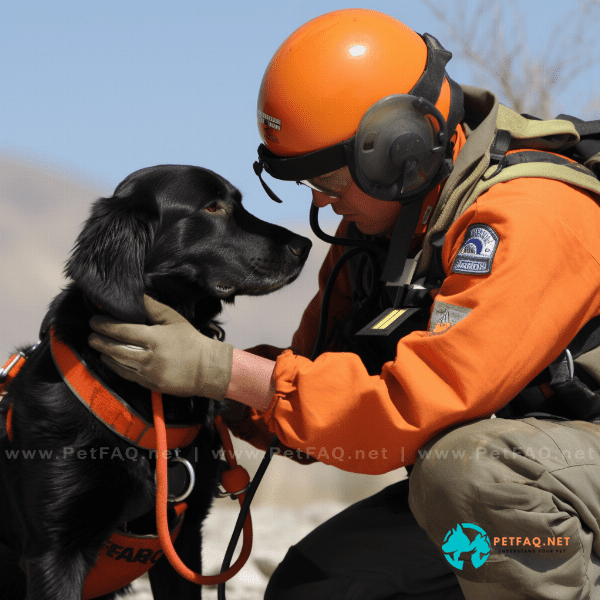
Basic Training for Search and Rescue Dogs: Commands and Skills
Basic Commands
One of the first things that handlers teach their search and rescue dogs is basic commands. These commands include “sit”, “stay”, “come”, and “heel”. These commands are the foundation of search and rescue dog training, and they are necessary for establishing clear communication between the handler and the dog.
Handlers should use positive reinforcement training methods to teach these commands. This involves rewarding the dog for performing the desired behavior, such as giving the dog a treat or praise when they sit on command.
Tracking and Trailing
Tracking and trailing are essential skills for search and rescue dogs. These skills involve following a scent trail left by a missing person. Dogs use their exceptional sense of smell to follow the scent trail, and their tracking and trailing skills can lead handlers directly to the missing person.
Scent Discrimination
Scent discrimination is another important skill for search and rescue dogs. This skill involves teaching the dog to distinguish between different scents, such as the scent of the missing person versus the scent of other people or animals.
Handlers can teach scent discrimination using scent training aids and positive reinforcement training methods. This involves rewarding the dog for correctly identifying the scent of the missing person, and redirecting or ignoring the dog for incorrect responses.
Search Patterns
Search patterns are another important aspect of search and rescue dog training. Handlers teach their dogs to search in a systematic and efficient manner, covering large areas quickly and thoroughly.
There are several different search patterns that handlers can use, including the grid search, the spiral search, and the expanding square search. Handlers should choose the search pattern that is best suited for the terrain and conditions of the search area.
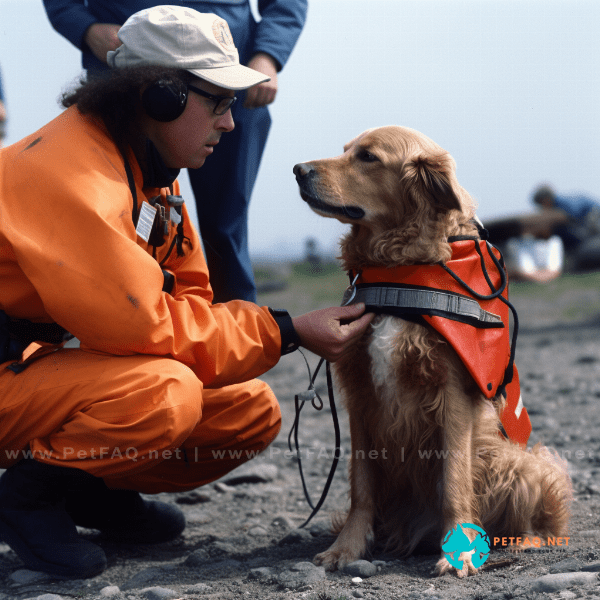
Advanced Training Techniques for Search and Rescue Dogs
Advanced training is a critical component of search and rescue dog training. This stage of training focuses on developing more advanced skills and techniques that are necessary for challenging search and rescue missions.
Water and Cliff Rescue
Water and cliff rescue are two specialized search and rescue operations that require advanced training techniques. Dogs that are trained for water rescue must be comfortable and proficient in swimming and diving, and they must also be able to detect and locate people who are submerged or hidden underwater.
Dogs that are trained for cliff rescue must be able to navigate challenging terrain and be comfortable working at heights. These dogs must also be able to work in close proximity to their handler and be able to follow commands even in stressful and dangerous situations.
Disaster and Urban Search and Rescue
Disaster and urban search and rescue operations are also specialized search and rescue missions that require advanced training techniques. These missions often involve working in complex and dangerous environments, such as collapsed buildings or flooded areas.
Dogs that are trained for disaster and urban search and rescue must be able to work in confined spaces, navigate through rubble and debris, and locate people who are trapped or injured. These dogs must also be able to work in close collaboration with other search and rescue professionals, including firefighters, police officers, and emergency medical personnel.
Air-Scenting
Air-scenting is another advanced search and rescue technique that involves training dogs to detect and follow human scent in the air. This technique is particularly useful in wilderness and disaster scenarios, where the scent trail may be difficult to follow on the ground.
Handlers can teach air-scenting skills using scent training aids, such as a scent cloth or a toy that has been scented with the person’s scent. Handlers can also use natural scents, such as the scent of human breath or sweat, to train dogs to detect human scent in the air.
Overall, advanced training is an essential component of search and rescue dog training. By developing specialized skills and techniques such as water and cliff rescue, disaster and urban search and rescue, and air-scenting, handlers can prepare their search and rescue dogs for success in even the most challenging search and rescue missions.
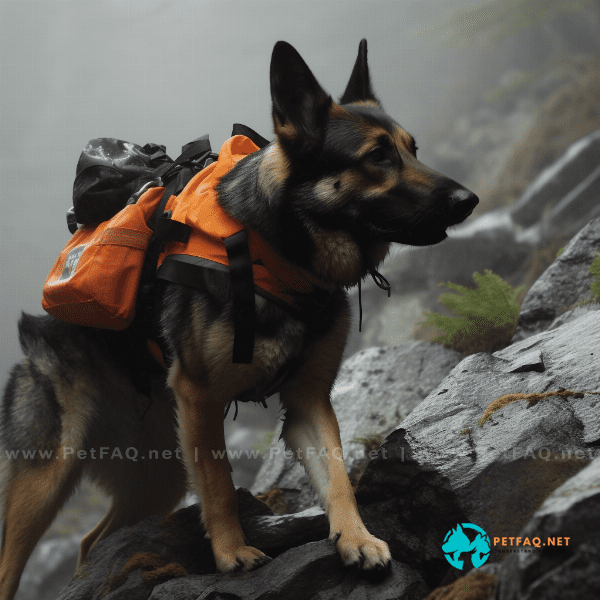
Physical and Mental Conditioning for Search and Rescue Dogs
Physical and mental conditioning is an essential component of search and rescue dog training. Search and rescue dogs must be in top physical and mental shape to perform at their best in high-stress and demanding search and rescue missions.
Physical Conditioning
Physical conditioning is critical for search and rescue dogs, as they must be able to cover large areas quickly and efficiently. Regular exercise and conditioning can help to improve a dog’s endurance, strength, and agility.
Handlers should incorporate a variety of exercises into their search and rescue dog’s routine, such as running, hiking, and swimming. These exercises should be tailored to the dog’s age, breed, and physical condition, and should be gradually increased in intensity over time.
Mental Conditioning
Mental conditioning is also critical for search and rescue dogs. These dogs must be able to perform at their best in high-stress and challenging search and rescue scenarios. Mental conditioning can help to improve a dog’s focus, concentration, and ability to work under pressure.
Handlers can use a variety of techniques to improve their search and rescue dog’s mental conditioning. This includes incorporating training exercises that simulate search and rescue scenarios, such as hiding a scent cloth or toy and asking the dog to find it. Handlers can also use positive reinforcement training methods to reinforce desired behaviors and improve the dog’s confidence and motivation.
Nutrition and Hydration
Overall, physical and mental conditioning is essential for effective search and rescue dog training. By incorporating regular exercise, mental conditioning techniques, and proper nutrition and hydration into their dog’s routine, handlers can ensure that their search and rescue dogs are prepared and equipped to respond to any situation they may encounter.
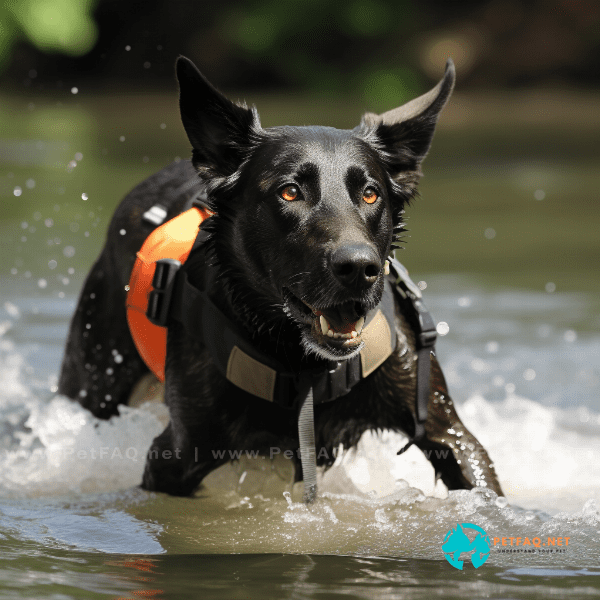
Maintaining Your Search and Rescue Dog’s Health and Wellness
Maintaining your search and rescue dog’s health and wellness is essential for ensuring their long-term success in search and rescue operations. Search and rescue dogs work in challenging and demanding environments, and it’s important for handlers to take steps to protect their dog’s health and well-being.
Regular Veterinary Check-Ups
Regular veterinary check-ups are essential for maintaining your search and rescue dog’s health and wellness. Dogs should receive routine vaccinations, parasite prevention, and dental care. Additionally, dogs should be screened regularly for any health conditions that may impact their ability to perform search and rescue work.
Handlers should also be aware of any changes in their search and rescue dog’s behavior or health, and should seek veterinary care if necessary.
Rest and Recovery
Rest and recovery are critical for maintaining your search and rescue dog’s health and wellness. Search and rescue dogs work in physically and mentally demanding environments, and they require adequate rest and recovery time to perform at their best.
Handlers should ensure that their search and rescue dogs have access to a comfortable and safe resting area, and should provide them with appropriate rest and recovery time after intense search and rescue operations or training sessions.
Proper Nutrition and Hydration
Proper nutrition and hydration are also critical components of maintaining your search and rescue dog’s health and wellness. Handlers should provide their dogs with a balanced and nutritious diet that is appropriate for their age, breed, and level of activity. Additionally, dogs should have access to clean water at all times, particularly during exercise and training sessions.
Mental Stimulation and Enrichment
Mental stimulation and enrichment are also important for maintaining your search and rescue dog’s health and wellness. Dogs that are mentally stimulated and engaged are less likely to develop behavioral problems and are more likely to perform well in search and rescue missions.
Handlers can provide their search and rescue dogs with mental stimulation and enrichment by incorporating training exercises, puzzles, and games into their routine. These activities can help to improve the dog’s problem-solving skills, focus, and concentration.
Overall, maintaining your search and rescue dog’s health and wellness is essential for ensuring their long-term success in search and rescue operations. By providing regular veterinary care, adequate rest and recovery time, proper nutrition and hydration, and mental stimulation and enrichment, handlers can help to keep their search and rescue dogs healthy, happy, and ready to respond to any situation they may encounter.

Safety Protocols and Emergency Procedures for Search and Rescue Missions
Safety protocols and emergency procedures are essential for ensuring the safety and well-being of search and rescue dogs and their handlers during search and rescue missions. Search and rescue operations can be dangerous and unpredictable, and it’s important for handlers to be prepared for any situation that may arise.
Risk Assessment and Planning
Risk assessment and planning are critical components of safety protocols for search and rescue missions. Handlers should conduct a thorough risk assessment of the search area, including any potential hazards or dangers, such as rough terrain, bodies of water, or extreme weather conditions.
Handlers should also develop a detailed search plan, including a communication plan, emergency procedures, and contingency plans in case of unexpected events.
Equipment and Gear
Proper equipment and gear are essential for ensuring the safety of search and rescue dogs and their handlers. Handlers should ensure that their dogs are equipped with appropriate safety gear, such as harnesses, life jackets, and protective boots.
Heat and Cold Weather Precautions
Heat and cold weather precautions are also critical for ensuring the safety of search and rescue dogs and their handlers. Handlers should be aware of the signs of heat exhaustion and heat stroke in dogs and should take appropriate measures to prevent these conditions, such as providing shade, cool water, and rest breaks.
Similarly, handlers should be aware of the signs of hypothermia and frostbite in dogs and should take appropriate measures to prevent these conditions, such as providing appropriate clothing and shelter and monitoring the dog’s body temperature.
Emergency Procedures
Emergency procedures are critical for ensuring the safety of search and rescue dogs and their handlers in case of unexpected events or emergencies. Handlers should develop a detailed emergency plan that includes procedures for evacuating the search area, responding to injuries or medical emergencies, and communicating with emergency services.
Handlers should also ensure that they have the necessary equipment and gear, such as first aid kits and communication devices, to respond to emergencies and unexpected situations.
Overall, safety protocols and emergency procedures are critical components of search and rescue dog training. By conducting a thorough risk assessment, developing a detailed search plan, using proper equipment and gear, and following appropriate safety precautions and emergency procedures, handlers can help to ensure the safety and well-being of their search and rescue dogs and themselves during search and rescue missions.
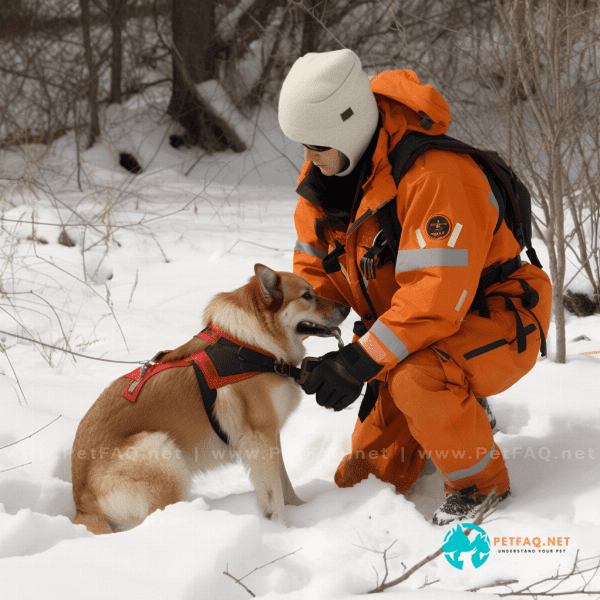
Working with Other Search and Rescue Professionals
Working with other search and rescue professionals is a critical component of search and rescue dog training. Search and rescue operations often require collaboration and coordination between various professionals, including firefighters, police officers, and emergency medical personnel.
Communication and Collaboration
Communication and collaboration are essential for effective search and rescue operations. Handlers should establish clear communication channels with other search and rescue professionals and should be familiar with their roles and responsibilities.
Handlers should also be prepared to collaborate and work closely with other search and rescue professionals, including sharing information, resources, and expertise.
Training and Exercises
Training and exercises are also important for preparing search and rescue dogs and their handlers to work effectively with other search and rescue professionals. Handlers should participate in joint training and exercises with other search and rescue professionals to improve their skills and to build strong working relationships.
Training and exercises should be designed to simulate real-world search and rescue scenarios and should incorporate a variety of search and rescue techniques and strategies.
Safety Protocols and Emergency Procedures
Safety protocols and emergency procedures are also critical for effective collaboration between search and rescue professionals. Handlers should ensure that they are familiar with the safety protocols and emergency procedures of other search and rescue professionals, and should be prepared to follow these procedures in case of emergencies or unexpected events.
Handlers should also ensure that they have the necessary equipment and gear to work safely and effectively with other search and rescue professionals.
Respect and Professionalism
Respect and professionalism are essential for effective collaboration between search and rescue professionals. Handlers should be respectful of the roles and responsibilities of other search and rescue professionals, and should be mindful of the unique challenges and demands of their work.
Handlers should also strive to maintain a high level of professionalism in their interactions with other search and rescue professionals, including adhering to ethical standards and treating others with respect and courtesy.
Overall, working with other search and rescue professionals is a critical component of search and rescue dog training. By establishing clear communication and collaboration channels, participating in joint training and exercises, following safety protocols and emergency procedures, and maintaining a high level of professionalism and respect, handlers can help to ensure the success of search and rescue operations and the safety of all involved.
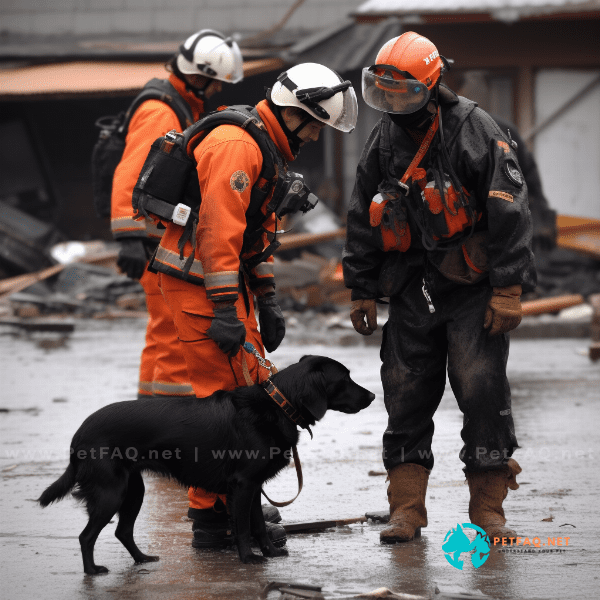
Continual Learning and Development for Search and Rescue Dog Teams.
Continual learning and development are critical components of search and rescue dog training. Search and rescue operations are constantly evolving, and it’s essential for handlers and their dogs to stay up-to-date with the latest techniques, equipment, and strategies.
Training and Education
Training and education are essential for continual learning and development in search and rescue dog teams. Handlers should participate in regular training and educational opportunities to improve their skills and knowledge.
Training and education should be tailored to the specific needs and goals of the search and rescue dog team, and should include a variety of techniques and strategies for search and rescue operations.
Specialization and Certification
Specialization and certification can also help to facilitate continual learning and development in search and rescue dog teams. Handlers may choose to specialize in specific areas of search and rescue, such as water rescue or urban search and rescue, and may pursue certification in these areas.
Certification programs can provide handlers with additional training and education, as well as formal recognition of their skills and expertise.
Community Involvement
Community involvement can also be an important component of continual learning and development in search and rescue dog teams. Handlers may choose to participate in local search and rescue organizations or volunteer for search and rescue missions in their communities.
Community involvement can provide handlers with valuable opportunities to learn from other search and rescue professionals, to develop new skills and knowledge, and to make a meaningful contribution to their communities.
Feedback and Evaluation
Feedback and evaluation are also important for continual learning and development in search and rescue dog teams. Handlers should seek feedback from other search and rescue professionals, as well as from their dogs, to identify areas for improvement and to refine their skills and techniques.
Handlers should also participate in regular evaluations of their skills and knowledge, including practical evaluations and written assessments.
Overall, continual learning and development are essential for effective search and rescue dog training. By participating in regular training and education, specializing and pursuing certification, getting involved in their communities, and seeking feedback and evaluation, handlers and their search and rescue dogs can stay up-to-date with the latest techniques and strategies and can continue to provide effective and valuable support to search and rescue operations.
Frequently Asked Questions (FAQs) about Search and rescue dog training:
1. What breeds of dogs are typically used for search and rescue training?2. How long does it take to train a search and rescue dog?
3. What are the most important commands that a search and rescue dog needs to know?


